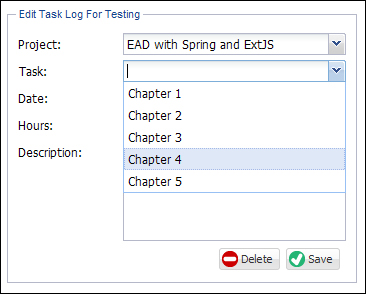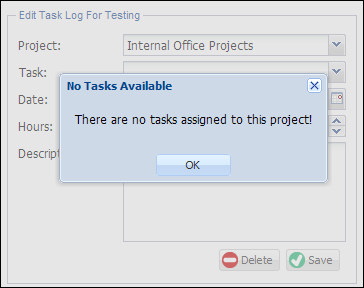Searching for task logs will require a valid start and end date. An appropriate message will be displayed if either field is missing after clicking on the Search button:

Selecting a task log item from the list will open the record in the Edit Task Log For Testing form. The Project dropdown in the task log form will display the company name in addition to the project name when the list is shown:

The selection of a Project from this list will filter the tasks displayed in the Task combobox:

If a Project that has no assigned tasks is selected, the following message is displayed:

Adding a new task log will preserve the currently selected Date and Project, if present:

Deleting a task log will ask the user to confirm their action:

Note
This should be the standard practice for all deletions when developing enterprise projects; never delete a record without first confirming the action with the user!
Selecting Yes will delete the task log record and remove the record from the...



